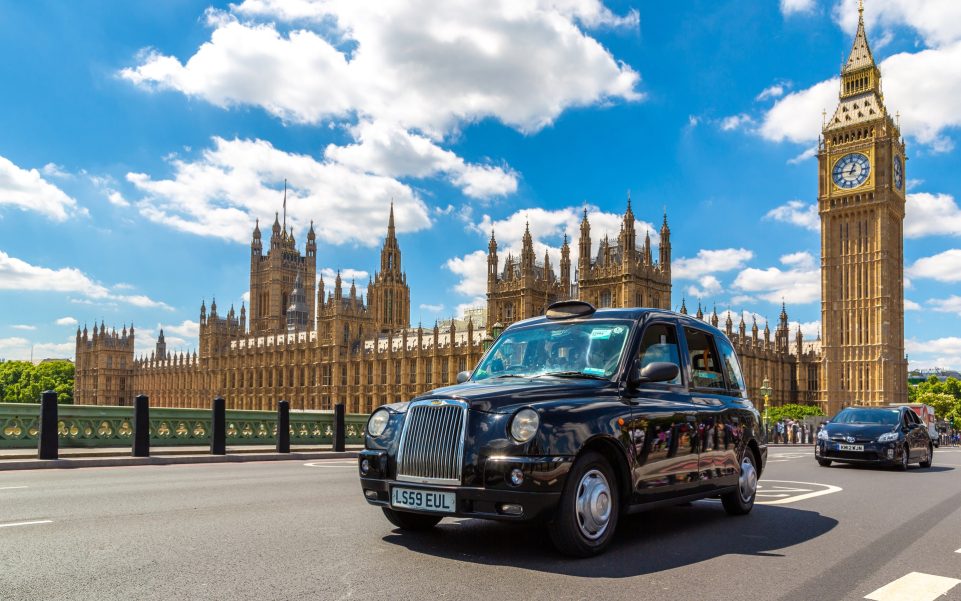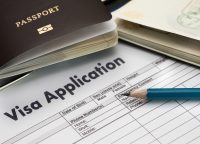Black Cab: history of London taxi

Must-dos for tourists in London are to take a picture of Big Ben, find a red telephone box and, of course, ride in a black cab. These famous taxis are so popular in England. What is its magic? Why does a ride in a black cab make you feel better? Where did the London cab come from? You will find the answers to these questions in our article.
Origins of London Black Cab
The business model of the modern taxi can be traced back to the Tudor dynasty in the 16th century. At the time, wealthy British began to move away from keeping their own carriages as it was pricey to hiring them when needed. Hired carriages began to be called hackney carriages as a derivative of the French word «hacquenée», which means a horse for hire. This term is still in common use today, and if you go to London, you can use it to refer to a black cab.
Demand breeds supply. In 1634, an entrepreneur named Captain Bailey set up a four-carriage taxi rank on the famous Strand Street. He introduced fixed fares, made his drivers dress in a neat livery and show good manners towards customers. Thus, Captain Bailey created the first taxi company in England.
By the beginning of the 19th century, carriages for hire overwhelmed the streets of London causing regular traffic jams. Passengers had to pay a high price for a trip, even though it was faster to reach their destination on foot. France helped England resolve the problem. In 1823, they sent the first cabriolet there. It was a two-seat two-wheeled carriage with one horse; it was cheaper, faster and took up less space on the street. It was from the word «cabriolet» that the modern «cab» originated.
Interesting fact. Horse-drawn carriages were still in use in London even after motor cabs appeared, until 1930. However, most of them were destroyed during the First World War. The last horse-drawn cab has been kept in the English museum since 1947.
The era of horseless cabs began in London in 1897 when a 23-year-old entrepreneur named Walter Bersey set up London Electrical Cab Company. He developed and put into operation 25 electric cars that served as cabs. They were electrically powered and called Berseys after the manager of the company who designed them. Bersey’s company went bankrupt after only three years and a series of accidents that created mistrust among conservative Londoners towards the innovation.
Taxicabs were back on the streets of London in 1903. This time they were petrol-powered. Until 1929, the law did not impose any requirements towards the brand and model of a cab. The mandatory things were its black colour and a taximeter. French Unics were especially popular; about 80% of cabs were of this brand. The cab market was monopolised in 1930 by the company Austin (later British Leyland). They developed an ideal cab — Austin 12/4 Taxi nicknamed High Lot. The car was cheap and so high that a person could stand up inside it. All of Austin’s competitors left the market after nine months.
Interesting fact. In the 20th century, the Public Carriage Office introduced curious requirements for all motor cabs: the turning circle must not exceed 25 feet (8.5 meters). The reason for this was the diameter of the roundabout in front of the Savoy Hotel, popular with the high society, and the cab had to be able to make a U-turn there.
The most classic cab model which is loved by every Londoner came out in 1958, and it was Austin FX4. Compared with the previous model FX3, it had a front door on the left side and a new interior. Passengers could now sit opposite each other.
Austin dominated the market for almost 70 years, but British Leyland inscrutably went bankrupt. The end of Austin FX4 production was announced in 1997. Now you will not come across these British cabs on the streets of London anymore. You will see them only in the collections of enthusiasts.
The main manufacturer of modern British cabs is the Chinese company Geely.Since 2007, it has been manufacturing the LTI TX4 model, and it is the one you will surely manage to hail in London. However, Kamkorp, which revived the Metrolab brand and released the New Metrolab electric taxicab model in 2014, also has good prospects. Given that London is becoming more environmentally friendly, we can predict that soon electric cars will displace the Chinese ones.
Interesting Facts About Black Cabs
When getting into a cab, you will be pleasantly surprised by the fact that you do not need to duck your head. The cars are traditionally high, and this complies with the unspoken rule: nothing should force a gentleman to doff his hat.
The cab’s capacity is closer to that of a minibus than a regular taxi. They are five-seaters with two passengers sitting with their backs to the driver. There is also a place in the front, but it is intended for luggage.
The third interesting feature of black cabs is their black colour. The classic Austin cabs started to be manufactured after the Second World War. Painting meant additional expenses, and taxi companies preferred to cut down their expenses as much as possible. Nowadays, you can find colourful and branded cabs in London, but most of them are still glossy black.
Finally, if you choose black cabs to move around London, you should know that they are not cheap. But that’s a separate story.
Challenges of Would-Be Cab Driver
Being a cab driver in the UK is a great honour. To become a cabbie, you must pass The Knowledge test at the end of your training, which is comparable to a university course. It lasts 2 to 5 years. You must pass 21 intermediate exams before you can sit the final test. If you fail, you have to start all over again. There are only 12 attempts.
Interesting fact. Teachers from The Knowledge Point, the oldest London school for cab drivers, are proud to share the statistics: only 30% of applicants eventually get the badge.
The Public Carriage Office does not stop cabbies from using GPS navigators. However, you will not find these gadgets in cabs, because this would be a slap in the face of English traditions. Truth be told, it is simply unnecessary. The cabbie would know all 25,000 London streets, as it is a prerequisite for passing The Knowledge. That’s why in London you are sure to meet so-called knowledge boys and girls. They ride motor scooters around London for the sole purpose of learning the routes.
Cabbies must know not only the streets but also 20,000 other landmarks: parks, restaurants, stadia, business centres, etc. If a passenger asks to be taken to a two-star Michelin restaurant, the cabbie must grant this wish without delay or googling. In addition, a cabbie must keep a conversation flowing with the passenger regardless of the topic. Thus, they are experts in politics, sports, theatre, and train schedule. Without a doubt, a cab ride will put you in a good mood. You are sure to find the perfect conversation partner in a cabbie.
All these efforts are worth it. London’s cab drivers earn £50,000-70,000 a year. And on top of that, they have flexible working hours. Therefore, a black cab is one of the most expensive taxis in the world. For example, a half-hour trip from Heathrow Airport to central London will cost a passenger about £60.
Of course, there are cheap alternatives to iconic cabs, so-called minicabs, which are ordinary cars. They are 1.5-2 times cheaper. But they do not have the advantages of a black cab: they cannot use a designated lane, pick up passengers on the go and take on five people at once. And the last but not the least, they are not as charming as the black cabs. After all, a cab ride is not about getting from point A to point B; it is about travelling many decades back to the era of Sherlock Holmes, elegant ladies, and impeccable English manners.
FAQs about London Black Cabs
Can I book a cab in London via an app?
The best taxi apps are Uber, Bolt and Gett.
Should I tip the driver?
In the UK, there is no tradition of tipping a driver. However, if your driver has been exceptionally nice and courteous, you can tip them 10%.
How do I know if a cab is available?
Look at the taxi sign on the roof. If it’s lit up, the car is free. However, British cab drivers are so polite that even with a passenger on board, they can stop and apologise to you for not being able to pick you up.




